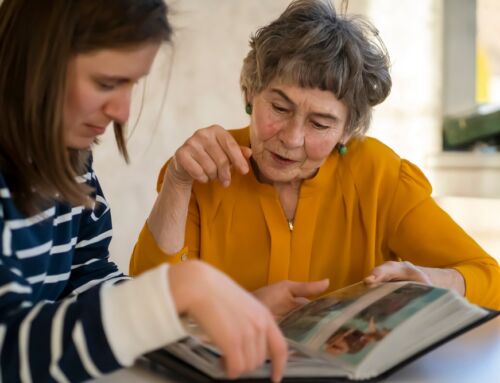This past week, I shared with you what I believe are five of the most important considerations when choosing a retirement location. Among the factors to think about are cost of living, accessibility, access to care, lifestyle, and a support system. As part of “accessibility,” I shared how important walkability is to many seniors, including several people who recently shared their thoughts with us about where they see the senior living industry headed in the future.
Pedestrian-friendly communities
“Walkability” relates to a community’s safe, pedestrian-friendly infrastructure such as footpaths or trails, sidewalks, and other rights-of-way for those on foot. In their most recent rankings, Walk Score rated the walkability of 141 U.S. cities with a population of 200,000 or greater. According to their research, the nation’s 10 most walkable cities are:
- New York, New York
- San Francisco, California
- Boston, Massachusetts
- Miami, Florida
- Philadelphia, Pennsylvania
- Chicago, Illinois
- Washington, D.C.
- Seattle, Washington
- Oakland, California
- Long Beach, California
There are also numerous smaller cities and towns that are pedestrian-friendly. You can search the Walk Score database to check out the walkability of any community by address.
The many advantages of walkability
More and more older adults want to live in communities that are walkable. There are a number of compelling reasons why this is an attractive quality in a community for both seniors and younger people alike.
Environmental benefits
More and more people are concerned about the impact their habits are having on the Earth. I’ve written about how the next generation of retirees will create an increased demand for Leadership in Energy and Environmental Design (LEED)-certified retirement communities, which focus on energy, space, and water efficiency, as well as reducing waste and using environmentally friendly building materials.
Choosing a walkable community is another environmentally conscious choice many seniors are making when it comes to their senior living location. Since a large majority of CO2 emissions are from burning fossil fuels, fewer cars on the road means less pollution, as well as less traffic. Walking is a zero-pollution means of transportation!
>> Related: The Environmentally Sustainable CCRC of the Future
Financial benefits
Because walkability is so desirable to homebuyers, living in a walkable community can add value to your home. According to research done by Walk Score’s parent company, RedFin, one point of Walk Score can add up to $3,250 in your property’s value.
Additionally, walkability can be a big cost-savings for your monthly budget. According to the U.S. Bureau of Labor Statistics, for many Americans, their vehicles are their household’s second largest expense (behind their rent/mortgage payment). Living in a walkable community may make it feasible to get rid of at least one vehicle (for two-car homes), thus eliminating a huge monthly expense.
>> Related: Crunch the Numbers: Staying in Your Home vs. Moving to a CCRC
Health benefits
Obesity and its related health issues are among the most serious public health challenges faced by our society today. I’ve shared information about a 2019 study out of Norway that found that risk of an early death was approximately five times higher for study participants who were sedentary as compared to those who were most active.
Choosing a walkable community can help fend off a sedentary lifestyle and the weight issues that often go hand-in-hand. In fact, research has found that residents of walkable communities weigh an average of 8 pounds less than people who live in less walkable areas.
>> Related: CCRCs Help Seniors Stay Active for a Healthier Life
More walkable retirement communities
The insights I received from our readers’ survey responses spoke primarily to the sustainability and health benefits of walkability, as well as convenience factors. They shared that they were interested in a retirement community that is in walking distance to shopping, restaurants, and entertainment, as well as with convenient access to public transportation.
This aligns with where I see the design trends for continuing care retirement communities (CCRCs or life plan communities) headed in the future, which I wrote about recently. Many of today’s retirees are drawn to more metropolitan CCRC locations, providing them the walkability they desire.
CCRCs that are in a more suburban or rural setting can still provide the walkability that seniors crave. Community designers should consciously scout out highly walkable plots of land. This intentional community planning can encourage CCRC residents to connect with nature—by designing walking trails —and also with one another by designing plenty of walkable outdoor activity spaces—like outdoor movie theaters and firepits, greenhouses and garden plots, communal outdoor kitchens and dining spaces, or even dog parks.
It’s also important for CCRCs in more suburban/rural areas to place an increased focus on transportation for residents. This can come in many forms—from shuttles to shared vehicles to communal bicycles or trikes—providing residents the flexibility to easily get to walkable areas and return to the community later.
>> Related: The CCRC of the Future: Community Design
Researching CCRCs’ walkability
With a little bit of internet research, you can easily find the most walkable CCRCs in the U.S.
First, check out the Walk Score database to find out the Walk Score for any given neighborhood or city. Then, use our free online CCRC search tool to find out more about that area’s CCRCs. Or you can deduce how walkable a particular CCRC might be by inputting its location into the Walk Score search tool.






